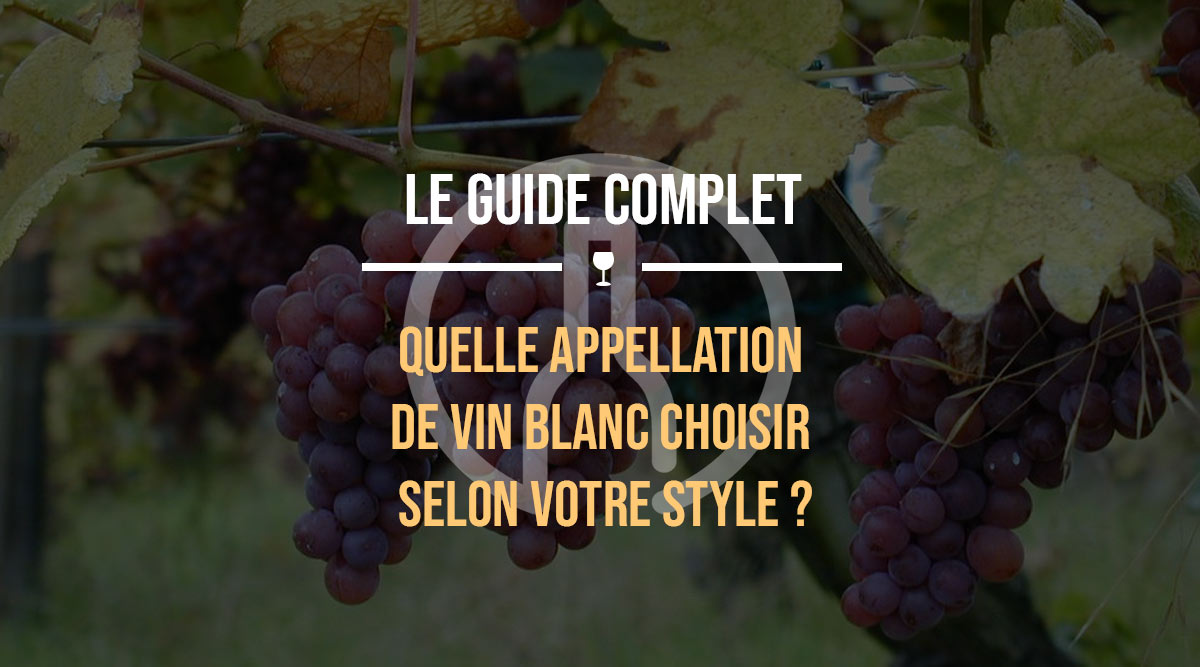Welcome to the blog of Comptoir des Millésimes, your favorite e-caviste from rare fine wines. Today we're going to talk about great french white wines.
France has a huge diversity of soils, climates and grape varieties. This makes it THE benchmark country in the wine world. Each region has its own terroir and wine styles.
Of course, there's always the winemaker's touch, who brings his or her own style to the table. Some will seek minerality and finesse, others fruit, but all will benefit from and respect the land and grape varieties they work.
Below, you'll find different styles of wine to which we've attached appellations.
This is a general description, which may change depending on the winemaker's winemaking methods.
WHAT TYPE OF WHITE WINE TO CHOOSE?
1. DRY WHITE WINES
Visit Sancerre wines as well as the other Sauvignon-based Loire appellations (Menetou-Salon, Pouilly-Fumé, for example) are citrusy, fresh, dry and taut wines.
The same goes for white wines from Pessac-Léognan as well as Graves. These are Bordeaux wines with Sauvignon in their blends. Some Sauvignon is blended with Semillon, which adds fruitiness and a little texture to the wine.
2. FRUITY WHITES
- AOC MÂCON
Mâconnais wines are single-varietal. Made exclusively from Chardonnay on limestone soils, these wines are fruity, round and sunny. Saint-Véran wines, also found in the Mâconnais, have the same characteristics, but with a little more substance.
We're going to the Rhône this time. Saint-Joseph is a wine from the northern Rhône Valley, and its grape varieties are Roussanne and Marsanne. Marsanne produces fresh wines, with aromas of white and exotic fruits, while Roussanne adds texture, with notes of sweet spices and stone fruits.
3. SWEET WHITE WINES
A very pretty and small appellation in the South-West of France, Jurançon benefits from a heterogeneous climate that makes it a unique vineyard. Five grape varieties are used in its production, the best known being Petit and Gros Manseng and Petit Courbu. Sugar density is medium, meaning the wine is generally sweeter than a Côtes-de-Gascogne, but less than a Sauternes. Aromas are generally of apricot and exotic fruit, with a fairly smooth finish.
The taste of Sauternes: There are many styles of sweet Bordeaux white wine that come from the Sauternes region. There are the sweet, honeyed wines of Barsac, which have many of the flavors of d'Yquem, but not the concentration. Bordeaux wines from Sauternes are richer.
In Sauternes, it's easy to find pineapple, peaches, flowers, pears, apricots, nectarines, orange, vanilla, custard, caramel, coconut and especially honey, which are not uncommon.
4. A MINERAL WHITE WINE
When we talk about minerality, we're talking about wines with mineral aromas provided by the soil, which are very important in certain appellations.
The first wine that comes to mind when we talk about minerality is Chablis.
Its Kimmeridgian soils (oyster fossils) add finesse and complexity to the Chardonnay.
Surely one of the most beautiful appellations in France, thanks to the beauty of the region and the quality of its soils.
A granitic, clayey and stony terroir. The appellation can blend Roussanne and Marsanne, but Roussanne takes precedence. Hermitage wines are more complex, fuller-bodied and better at capturing what the soil has to offer. They are powerful, spicy and very mineral. A superb discovery.










